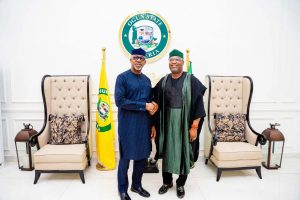- Speaker gives committee 1 month to report back
The Lagos State House of Assembly on Monday debated the 2025 appropriation bill of N3.005 trillion presented to the lawmakers by Governor Babajide Sanwo-Olu last Thursday.
Speaker Mudashiru Obasa, who presided over the plenary, committed the bill to a joint committee on appropriation and finance for review with a mandate to report back in one month.
Earlier, Chairman of the House Committee on Budget and Economic Planning, Hon. Sa’ad Olumoh, provided an overview of the proposed spending with a breakdown of items in the estimate.
While raising concerns over the projection of N408 billion deficit financing in the budget, Olumoh, who noted that loans are good when used for the actual purposes, added: “We have to be cautious about it. We need to have a sustainable and pragmatic way of financing our budget so that we don’t rely solely on loans.
“So I would suggest that we look at a realistic budget and ways to finance it using alternatives like the Public Private Partnership models.
“I also want to implore my colleagues that for the purpose of the 2025 budget, we need to properly scrutinise it to prevent wastage.”
He commended the government for its intentions as stipulated in the budget estimate.
Deputy Majority Leader Adedamola Richard Kasumu called for a careful review of the budget to enable comparative analysis and feasibility.
Hon. Gbolahan Yishawu (Eti-Osa 2) noted the absence of allocations for electricity infrastructure and climate change initiatives while suggesting a five-year retrospective analysis of deficit funding.
His colleague, Hon. Femi Sheed, stressed the importance of linking borrowing to critical infrastructure like electricity while ensuring revenue efficiency and addressing potential financial leakages.
On his part, Hon. Desmond Elliot highlighted the omission of food security measures in the proposal while urging the inclusion of initiatives to meet citizens’ needs.
Recall that Governor Sanwo-Olu told the lawmakers that the budget aims to achieve a 59% capital expenditure and 41% recurrent expenditure ratio with a deficit financing to be sourced through external and internal loans and bonds.







